Remembering the great American life of Yankees legend Yogi Berra

At 4:33 a.m. on June 6, 1944, under overcast skies just before dawn broke over Omaha Beach, a 36-foot steel boat was lowered from an American battleship into the dark waters of the Atlantic. Inside this boat—in Naval terms, a Landing Craft, Support (Small) boat; in relative terms, a bathtub—hunkered a commanding officer and six sailors. One of those sailors was a first-generation American teenager from St. Louis named Lorenzo Pietro Berra, or Lawrence Peter Berra, or, better still, to you, me and posterity, Yogi Berra.
The essential job of the LCS was to run interference for the waves of troops that would, across all of Normandy’s shores, account for the largest amphibious invasion in the history of the world. When the battle commenced at 6:30 a.m., the LCS sprayed bullets and rockets across the heavily fortified beach fronts before the troops landed. Berra, then 19, manned a machine gun mounted on a ball turret in his LCS and stood tall with a boy’s wonder—too busy marveling at the tremendous explosions of lights and sound to consider the danger that would end the lives of 2,500 of his fellow Americans. In an LCS, only the steel walls of the boat and the grace of God stood between a sailor and death.
“You better get your head down in here,” the officer barked at Berra, “if you want it on.”
Seaman Second Class Yogi Berra fought at D-Day from one of the smallest crafts in the world’s biggest assault. He was hit by a bullet from a German machine gun (he earned a Purple Heart, though as not to cause concern to his mother, he never applied for it), and came through the war with a Distinguished Unit Citation, two battle stars, a European Theatre of Operations ribbon and the beginnings of what was nothing less than the quintessential, if not the outlandishly charmed, Great American Life.
Carmen, the Latin word for incantation, gave us charmed, the Middle English word for magic spell, which gave us charmed, which gave us Yogi, who was married from 1949 to her death in 2014 to the third girl he ever dated—a woman named ... Carmen.
Twenty-seven months after D-Day, wearing the famed pinstripes of the New York Yankees, Berra stood in the lefthand batter’s box at Yankee Stadium for what was his first major league game. Jesse Flores, a pitcher for Connie Mack’s Philadelphia Athletics, threw him an outside curveball. Berra whacked it into the rightfield seats for his first home run. The next day, he hit another one.
Yogi Berra, American original and Yankees immortal, dies at 90
Berra would go on to become, in most arguments, the greatest catcher in baseball history and, without argument, the greatest winner the game ever has known. Berra saw baseball and America grow up. He entered the sport when it was an all-white game and left it when indoor baseball arrived. In that spot between integration (1947) and expansion ('61), when baseball was the unchallenged great American pastime, nobody but Stan Musial drove in more runs than Berra and no one was more beloved. Berra played in 14 World Series, winning a record 10 of them, and participated in seven more as a coach or manager—putting him in 21 of the 34 World Series played between 1947 and '81.
No one ever knew more success or took part in more famous baseball moments than Berra. “Talking to Yogi Berra about baseball,” the late commissioner Bart Giamatti once said, “is like talking to Homer about the gods.”
*****
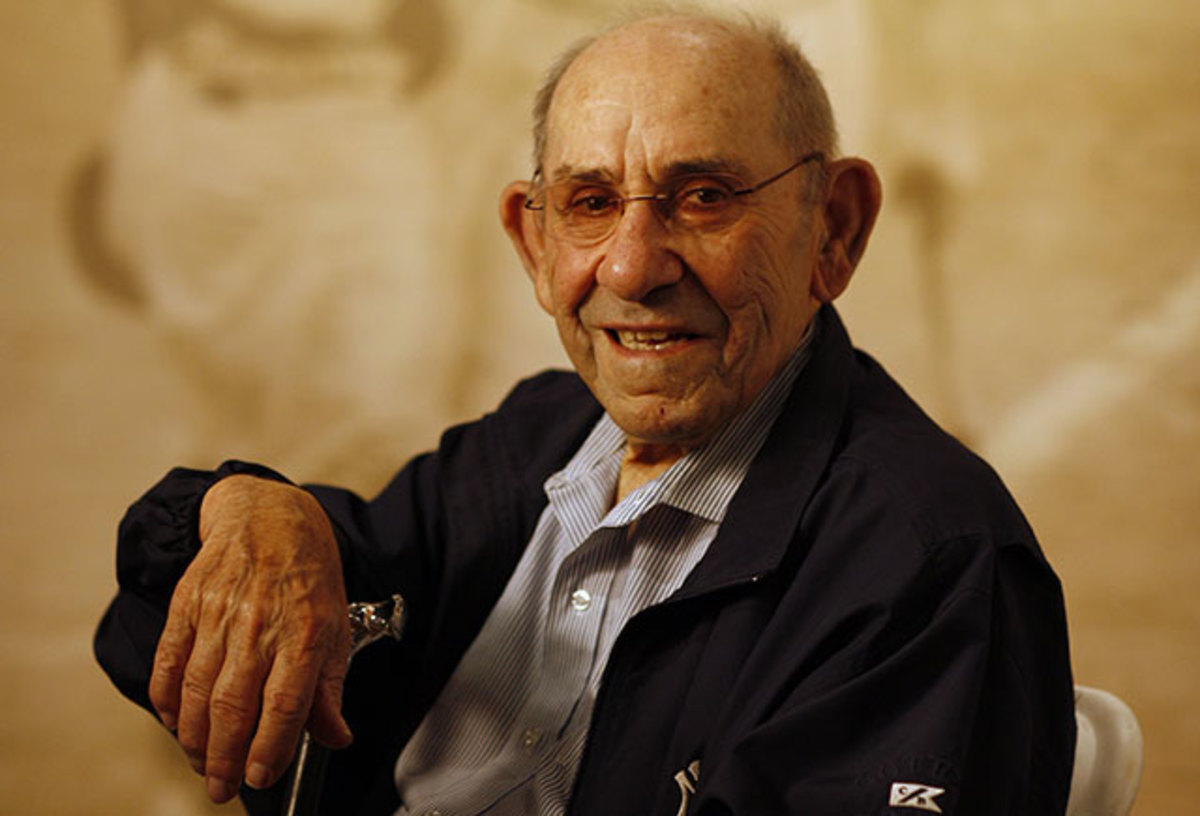
The most mangled, spindled, mutilated, desecrated and otherwise overworked word in sports is “hero.” What once was reserved for those who acted with great courage and nobility has been debased for every ordinary Joe whose bloop single sends home a tie-breaking run in some August midweek afternoon game in Kansas City. The absurdity of its modern application became most pronounced when the rich, full and, yes, as even the ancient Greeks might have conceded, heroic life of Lawrence Peter Berra ended Tuesday night. He was 90 years old.
Turning words into taffy was, of course, as much a Berra natural talent as putting solid wood to a baseball, no matter how unsightly the pitch or his swing. With only an eighth-grade education, Yogi leaves a presidential library full of malapropisms and observations that mine wisdom from simplicity. Remarks such as “It ain’t over 'til it’s over” made him, as The New Yorker observed in 1991, the successor to Churchill as the most quotable figure in the world.
When he gave directions to his Montclair, N.J., house, he said, “When you come to the fork in the road, take it.” When someone asked him about a popular restaurant, he said, “Nobody goes there any more. It’s too crowded.” When Roger Maris and Mickey Mantle hit back-to-back homers in 1961, Berra observed, “It’s déjà vu all over again.”
He dispensed his unique wisdom on travel (“Why buy good luggage? You only use it when you travel”), the power of observation (“You can observe a lot by watching”), hitting (“You can’t think and hit at the same time”) and the mental side of baseball (“Ninety percent of this game is half mental.”)
Such aphorisms bestowed upon Berra the reputation of something of a mystic. The Best Guide of Meditation, for instance, in trying to explain why Zen fascinates Westerners, settled on its appeal as “a fusion of Yogi Berra and the divine.”
• MORE: Remembering Berra's best and funniest quotes
Shortly after George H. W. Bush won the presidency, he gathered his speech writers in the Roosevelt Room to tell them what he liked and didn’t like in his speeches. He gave them three rules: don’t use the word I, don’t write with too much emotion, and use a lot of Yogi Berra quotes. “I would rather quote Yogi Berra than Thomas Jefferson,” he told them.
Athletes react to death of Yankees legend Yogi Berra
Often times, however, Berra was simply flat-out accidentally funny. There was the time when Bobby Brown, his roommate and a medical student, was done reading Boyd’s Pathology of Internal Medicine and asked Berra to turn out the light. Berra, as was his habit, was reading a comic book, and explained he wasn’t quite done. A short while later, as Berra reached for the light, he said to Brown, “Gee, that was a good one. How’d yours come out?”
Another time, he was introduced to Ernest Hemingway at Toots Shor’s. Upon being told the great Hemingway was a writer, Berra replied, “What paper do you work for?” And there was the time as an Astros coach in the 1980s, proving he still had the touch, when broadcaster Larry Dierker asked Berra how he liked playing golf at Lake Nona. “It was all right, except for one thing,” Yogi said. “They were marinating the greens.”
The delightfulness of Yogi-isms—the humor was unintended, the subsequent packaging and selling not so—detracted from the grand scale of his playing career and his life. So passed not only a great baseball life, but also what stands as one of the preeminent American lives—Berra, 5' 7", 195 pounds at his physical peak, being the oddly shaped embodiment of The Greatest Generation that armed with bullets, ingenuity and pluck made America into the power that it is.
The arc of Berra’s life traces the arc of America’s rise: Born to poor immigrants seeking a better life, forged in the crucible of war, found prosperity in the postwar boom, enriched by entrepreneurial acumen and passed to the next generation a more comfortable life—all done with a twinkle in the eye that was as real as those rockets over Normandy.
“Yogi Berra,” Brown once said, “is a national treasure, and the world needs more just like him. Every time I see him, I feel a little better about the human race.”
At the time of his death, Berra might have been as popular and cherished as ever, an astounding testament to the generous soul of a man who played his last big-league game as a player-coach for the Mets in 1965. He starred in television commercials that ran for years, especially with the Aflac insurance duck, and, between 1997 and 2009, wrote or co-wrote eight books, and established the Yogi Berra Museum and Learning Center in Montclair in '98.
But he was so beloved even more because he was a God-fearing man who knew humility was a virtue, not a weakness, who wrote love letters to Carmen from the road, who into his advanced years still carried in his wallet a picture of his parents, who never spoke ill of others, who lacked the gifts of extraordinary physical size, appearance and skills but owned the rare one of the ability to laugh at himself. In short, Yogi was the real deal, the genuine goods.
Fate, just like the rest of us, could not help but smile upon him. Berra wound up in one of those World War II LCSs because he innocently volunteered for what at the time was unspecified training—anything to have something to do after enlisting in the Navy. Berra was born in St. Louis in 1925, one of five children of Pietro and Paulina Berra. Pietro had left Italy for America in 1909 and eventually found work in St. Louis at a kiln and a home at 5447 Elizabeth Avenue in a predominantly Italian-American section known as “the Hill.” Across the street, at 5446 Elizabeth, was his friend Giovanni Garagiola, whose son, Joe, also would become a big-league catcher and a humorist of a more intentional kind.
Berra grew up being called “Lawdie”—a derivation of the way his mother tried to pronounce “Lawrence”—until he and his buddies happened to see a travelogue about India at the movies one day. One of his friends said Berra resembled one of the “yogis” in the movie. The nickname stuck.
Berra did poorly as a student; his mind always was on baseball. After finishing eighth grade, in a major summit meeting in the Berra house, Yogi sat with his father, his brothers, his principal and his parish priest and pleaded for them to understand that what he wanted to do more than anything was to quit school and play baseball. They relented.
In 1942, the Cardinals, under the operation of general manager Branch Rickey, signed Garagiola to a $500 bonus. Rickey, though, passed on Berra, unconvinced he was big-league material. He did come around to offering Berra $250, but a miffed Berra, believing he was at least as good as Garagiola, refused. Later that year, the Yankees did sign him to a $500 bonus.
Berra became one of the greatest players in history, though his unathletic-looking body and reputation as a good-natured rube (which the New York press happily amplified) cost him his true due. Berra played 15 seasons in which he took 300 plate appearances and received MVP votes in every one of them, once putting together a seven-year run of MVP finishes of first, fourth, second, first, first and second.
Despite his knack for swinging at just about any pitch and a swing in which he seemed to be clubbing the ball—like a housewife beating a the dust out of a rug on a clothesline—Berra was a feared clutch hitter who rarely struck out. The former manager and executive Paul Richards once called him "the toughest man in baseball in the last three innings.” In the 1950s, for instance, Berra was a .287 hitter, but that rose to .316 in the late innings of close games.
Berra never struck out 40 times in a season. Five times he had more home runs than strikeouts. But one superlative speaks best to the purity of his ability to hit a baseball often and with power. There are only two men in baseball history who hit 350 home runs without striking out 500 times: Joe DiMaggio and Yogi Berra.
*****
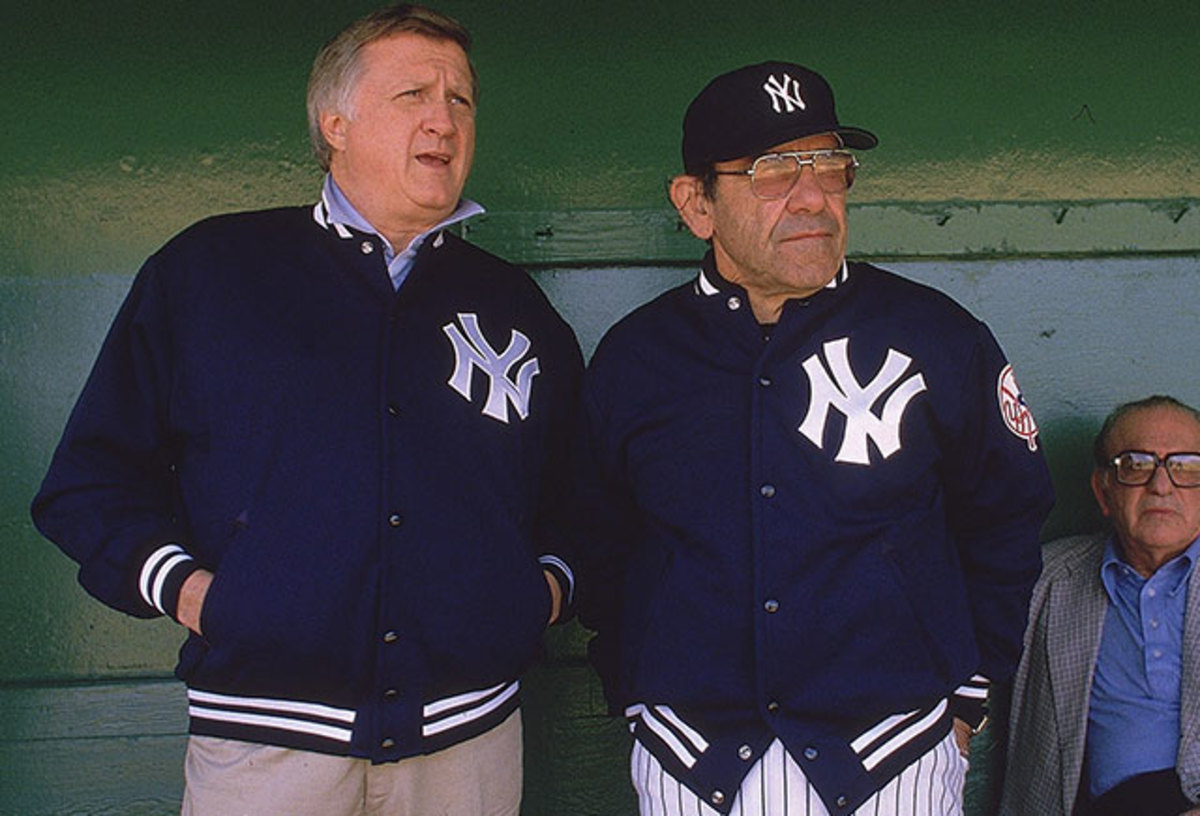
Back in the 1950s, CBS produced a television show called “You Are There,” in which historical events were re-enacted to give the viewer a sense of being an eyewitness to history. Berra’s baseball career had the same quality, only in real time. He was there for the first televised World Series (1947), the famous steal of home by Jackie Robinson in the only World Series Brooklyn ever won ('55), the Series-walk-off homer by Bill Mazeroski ('60), the Miracle Mets’ championship ('69), the three home runs by Reggie Jackson in a World Series game ('77) and the Bucky Dent one-game playoff home run against Boston ('78).
Yogi: What did Berra say, when did he say it and what does it all mean?
He was in uniform for both World Series “shoe polish incidents,” in which a batter named Jones was awarded first base after shoe polish was found on a pitch otherwise ruled a ball (Nippy in 1957, Cleon in '69). He hit the first pinch-hit home run in World Series history (1947). He was the catcher for the only two World Series games ever in which a pitcher was one out away from a no-hitter (Bill Bevens lost his, and the game, in 1947; Don Larsen got his, a perfect game, in '56). He even was in the stands when Enos Slaughter scored the series-winning run from first base on a single (1946) and for the Bobby Thomson game when the Giants won the pennant ('51, though Berra, having left early to beat the traffic, heard the call while driving over the George Washington Bridge).
At the height of his career, Berra became an enormously popular figure as Americans enjoyed their post-war peace and prosperity and baseball faced little competition as their sport of choice. Berra was hired to endorse an incredible range of products, including cat food, salad dressing, cigarettes, fishing lures, shaving cream, clothing, sporting equipment, beer and a Catskills resort.
No rube when it came to his money, Berra entered into what became a lucrative and long association with Yoo-Hoo chocolate drink by smartly asking for a cut of the company instead of a flat fee. Berra also became one of the first athletes, if not the first, to hire an agent—former Yankees traveling secretary Frank Scott—specifically to handle endorsements and appearances—his own marketing guy in the 1950s.
“I just don’t sit around making jokes and funny cracks all the time,” he told Life magazine in 1964, when he was 38 and about to begin his managerial career, replacing Casey Stengel. “I think about things, like are my investments good, long-range things, like am I a good father and do I spend enough time with my kids, giving them the right encouragement and education.”
The Berra magic did not translate as well to managing. He brought the 1964 Yankees to the seventh game of the World Series, where they lost to Bob Gibson and the Cardinals, and was summarily fired by general manager Ralph Houk. He brought the 1973 Mets to the seventh game of the World Series, where they lost to Oakland, and was fired two years later. Worst of all, he became the 12th manager fired in 11 years by George Steinbrenner in 1985—just 16 games into a season in which Steinbrenner had promised not to make a managerial change.
The firing brought out the intense pride in Berra and served only to elevate his status as a man of integrity. Steinbrenner never personally told Berra he was fired, leaving the dirty work to general manager Clyde King in the visiting manager’s office of old Comiskey Park in Chicago. Players were so upset at the news that they hurled objects and cursed. Yogi’s son, Dale, an infielder who had joined the Yankees just that season, dabbed at tears with a baseball sanitary sock. Yogi vowed never to have anything to do with Steinbrenner’s Yankees ever again.
“I’ve always believed in brotherhood, redemption and forgiveness,” Berra once wrote with co-author Dave Kaplan. “But my firing by George Steinbrenner as Yankees manager in 1985 was more than hurtful and disappointing. It struck deeper than that ... What bothered me most was the disrespect; to me, that was unforgivable.”
For 14 years, Berra refused to step foot in Yankee Stadium, even in 1988, when the Yankees dedicated plaques in Monument Park to him and his catching mentor, Bill Dickey. Then, in 1999, just as the Museum was founded, and with broadcaster Suzyn Waldman brokering the peace, Berra decided to forgive. Steinbrenner came to the Museum to apologize—not for firing him, but as he said, “I know I made a mistake in not letting you go personally.”
So began yet one more career as a Yankee, this one as a legend-in-residence. He threw out the first ball at the home opener that year. Three months later, he came back to catch a first pitch from Larsen—after which David Cone just happened to throw a perfect game himself. The magic was still there.
SI 60 Q&A: Roy Blount Jr. on learning who Yogi Berra was, and what he said
Berra so loved these golden years back in pinstripes, literally so in spring training when he pulled back on his famous No. 8. Yankees managers Joe Torre and Joe Girardi embraced him for his wisdom and that trademark Berra charm. Shortstop Derek Jeter developed a strong friendship with Berra. Whenever Yogi visited the clubhouse, he would wind up at Jeter’s locker, and the two icons would engage in the timeless banter of teammates despite being born almost half a century apart. Yogi would remind Jeter he still had a long way to go to match his 10 rings; Jeter would kid him back that it was much harder to get a ring these days, with two rounds of playoffs just to get to the World Series.
To the end, it was a big, Broadway kind of life. Berra met Babe Ruth, played with DiMaggio and Mantle, saw combat at Omaha Beach, went to the World Series 21 times, golfed with presidents, had a play written about him, hammed it up on television with Ed Sullivan, Phil Silvers and Perry Como, and became not just famous but an iconic, beloved American brand. Go ahead: just try to say “Yogi” without smiling.
And yet what was most beautiful about this Great American Life was the simplicity of it, the timeless values. Humility. Faith. Devotion to home, family and friends. He never left Montclair or his beautiful Carmen. When his friend and former teammate Phil Rizzuto was dying, Berra visited him every day, playing Bingo to keep his spirits up. The treasure was not in the many places he went, the people he met and the achievements he had accomplished. It was in the man Pietro and Paulina’s son had become.
Shortly after this new century had begun, CNN caught up with Berra and asked him to reflect on this wide, expansive life of his. Yogi, ever sweet, ever sage, ever wonderful, replied, “If I had to do it all over again, I would do it all over again.”
Rare SI Photos of Yogi Berra
Yogi Berra
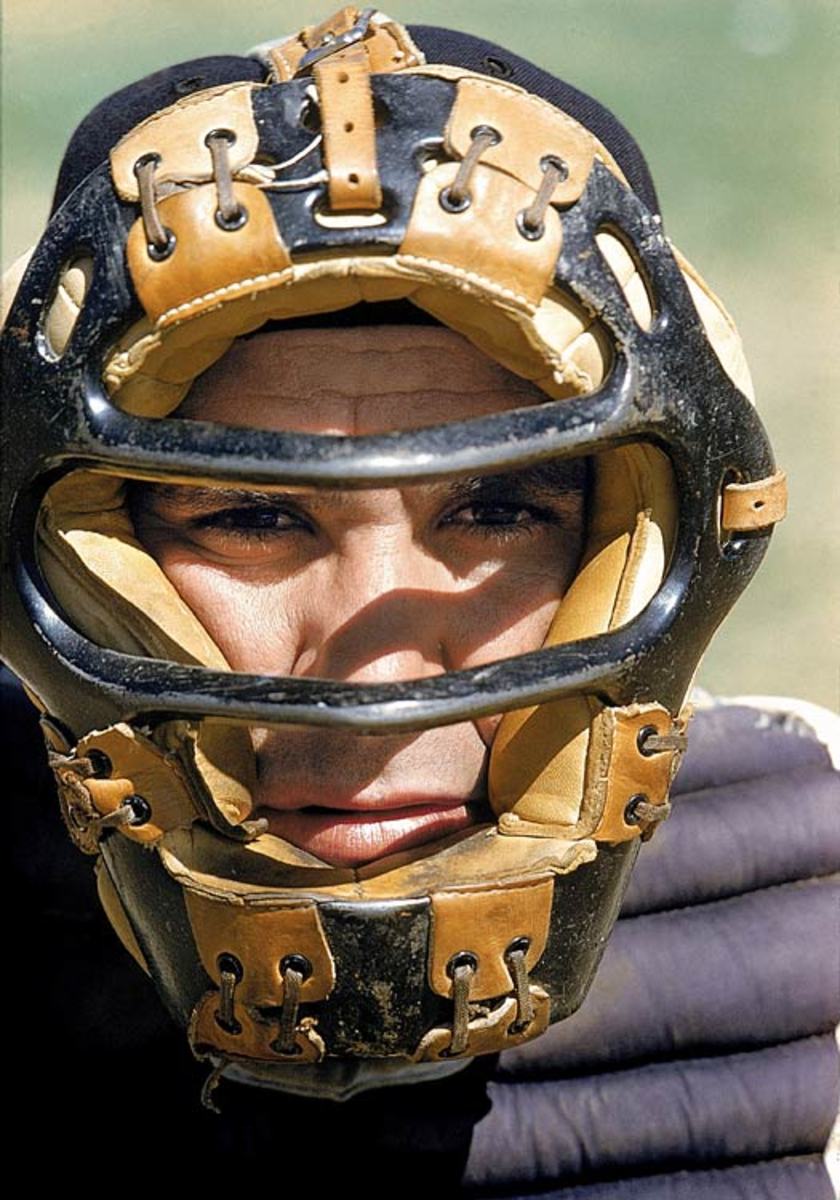
Few players in the history of American sports have ever been more beloved than Yogi Berra. No. 8 turned 88 years old on May 12, 2013. Berra was a three-time AL MVP and a 10-time World Series champion during his playing career, all but four games of which were spent with the Yankees. As a manager he led both the Yankees and Mets to World Series appearances and he stayed on as a coach in the majors through the 1989. His greatest legacy, though, may be as the man who contributed more unforgettable quotes than anyone in baseball history, most notably "It ain't over til it's over." While he may not have said all the things attributed to him, it's clear that they contribute to a legacy that will live even longer than the Hall of Famer himself.
Yogi Berra

Yogi Berra

Yogi Berra and Bill Skowron
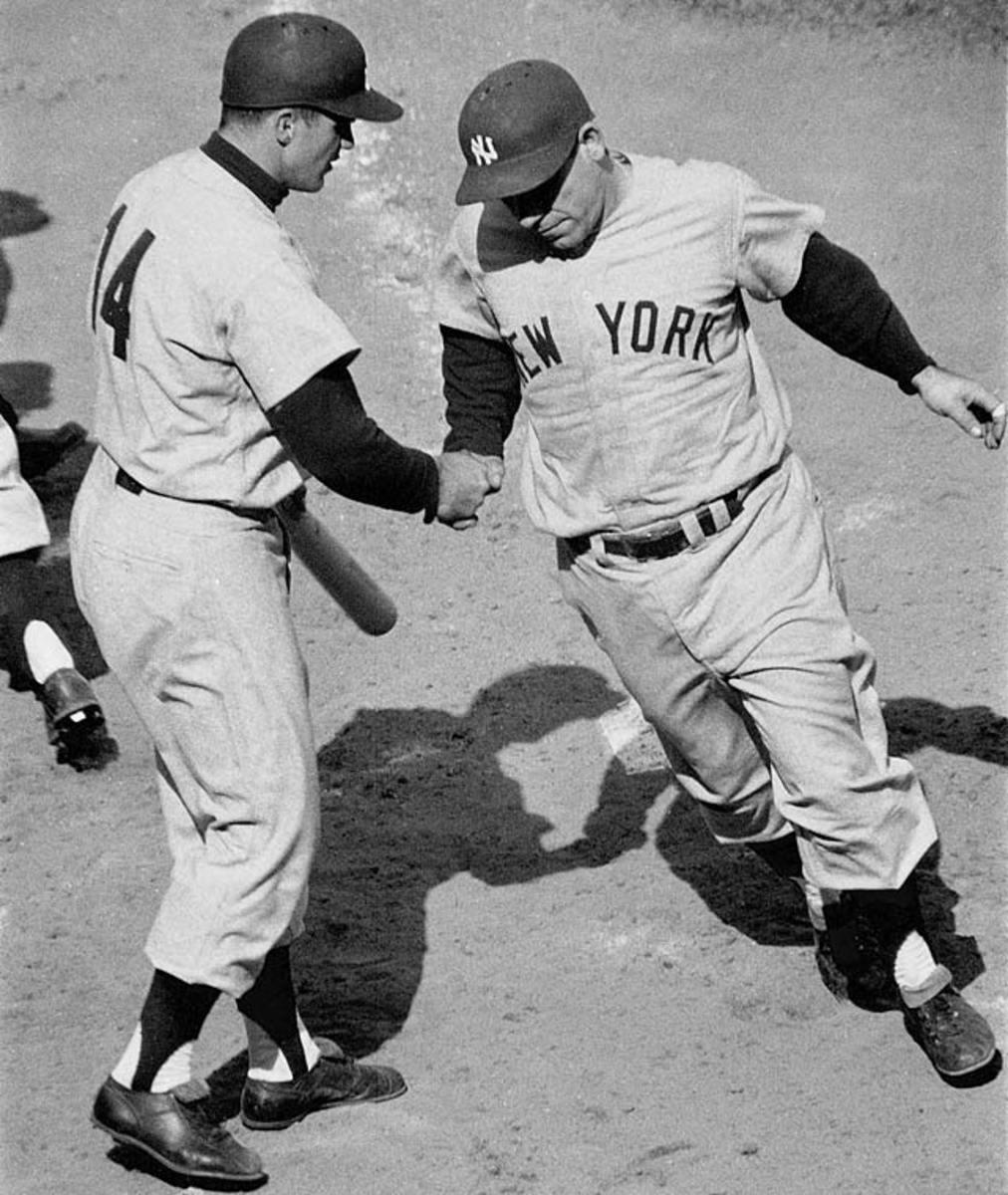
Yogi Berra and Ted Williams
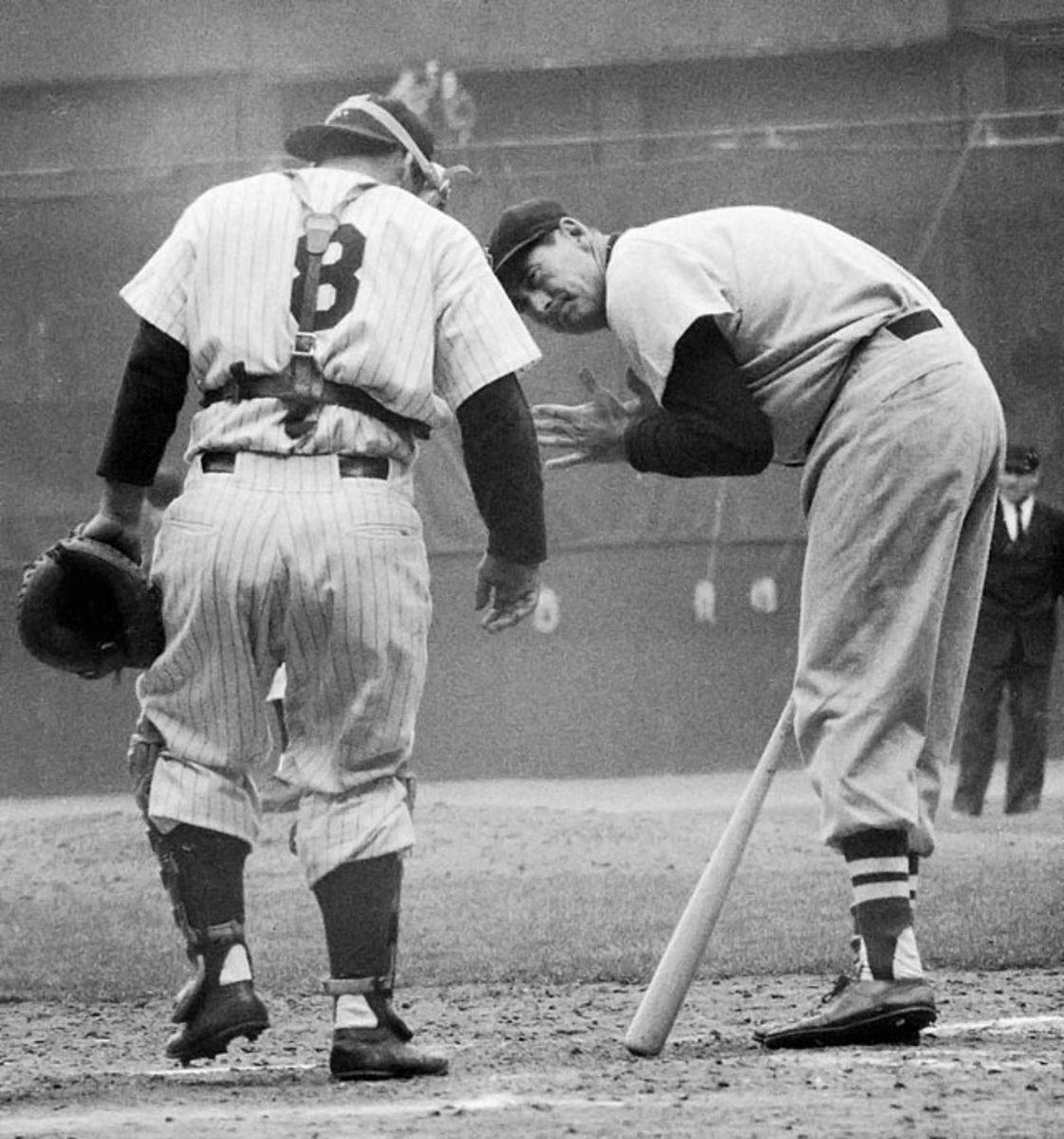
Yogi Berra

Yogi Berra

Yogi Berra

Yogi Berra

Yogi Berra and Bill Mazeroski
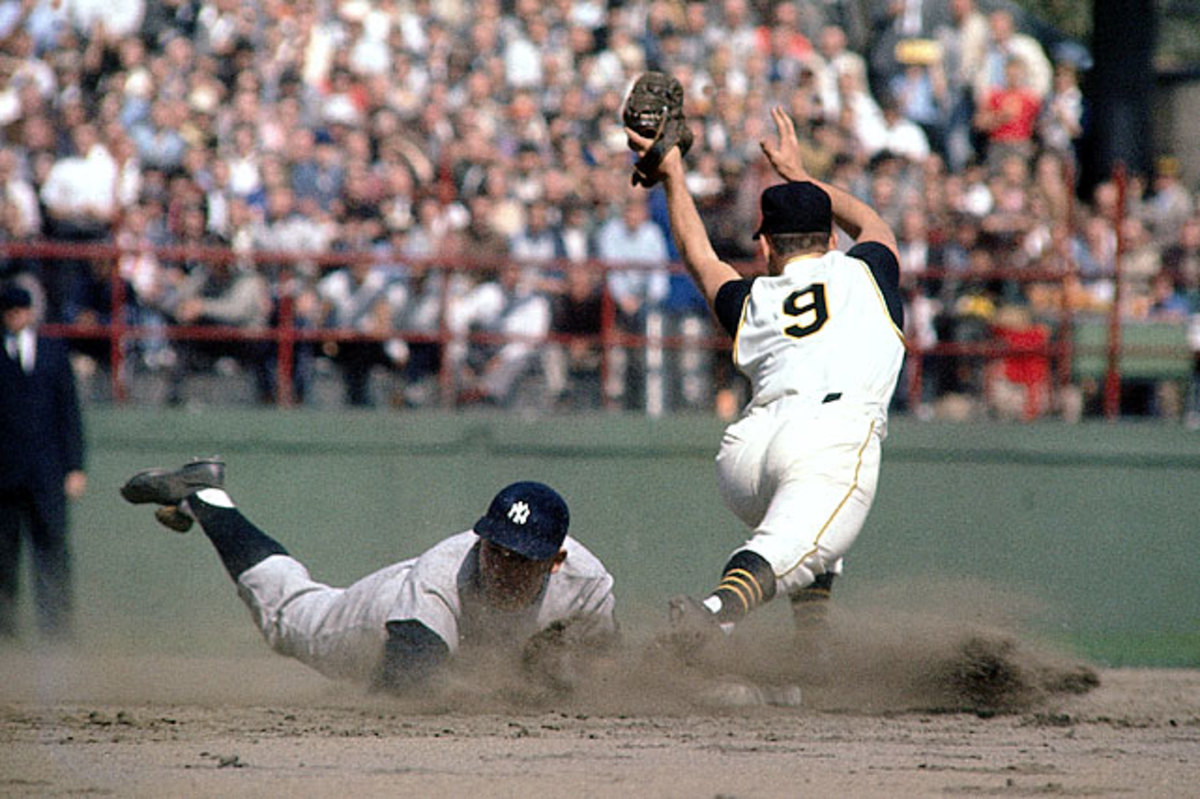
Yogi Berra and Casey Stengel
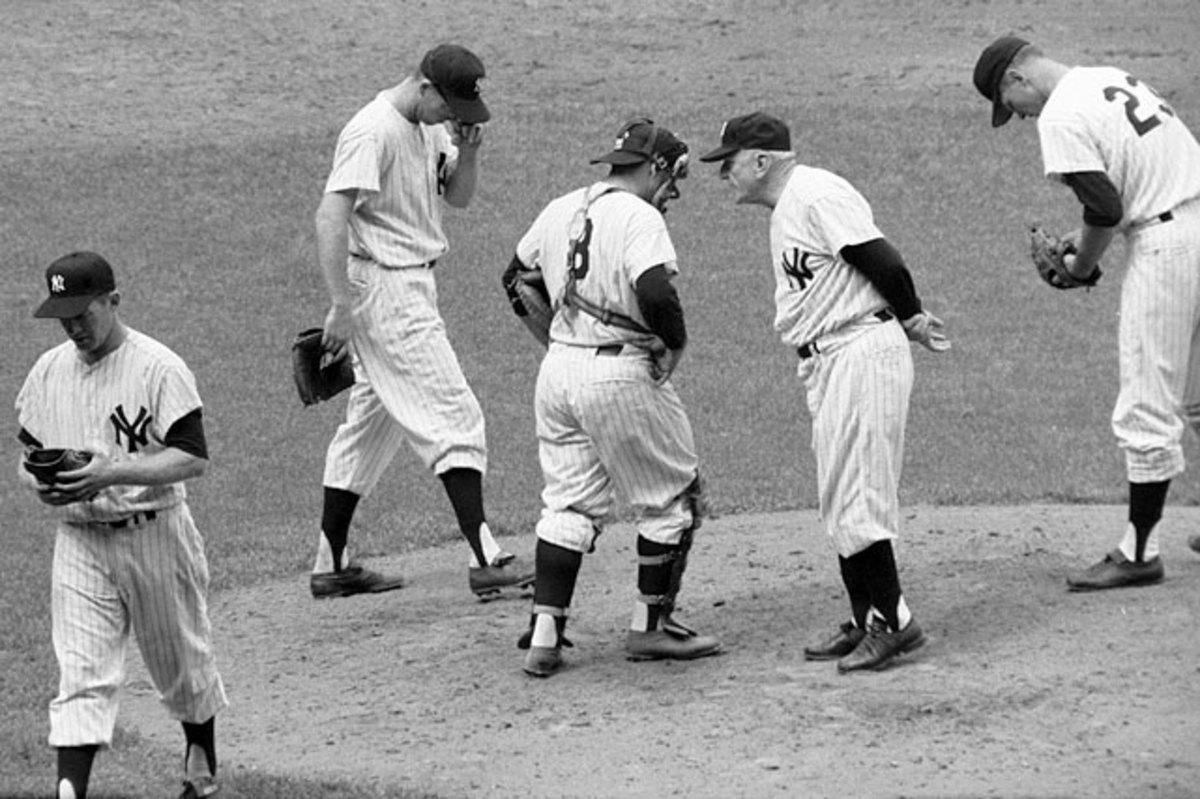
Yogi Berra and Hank Bauer
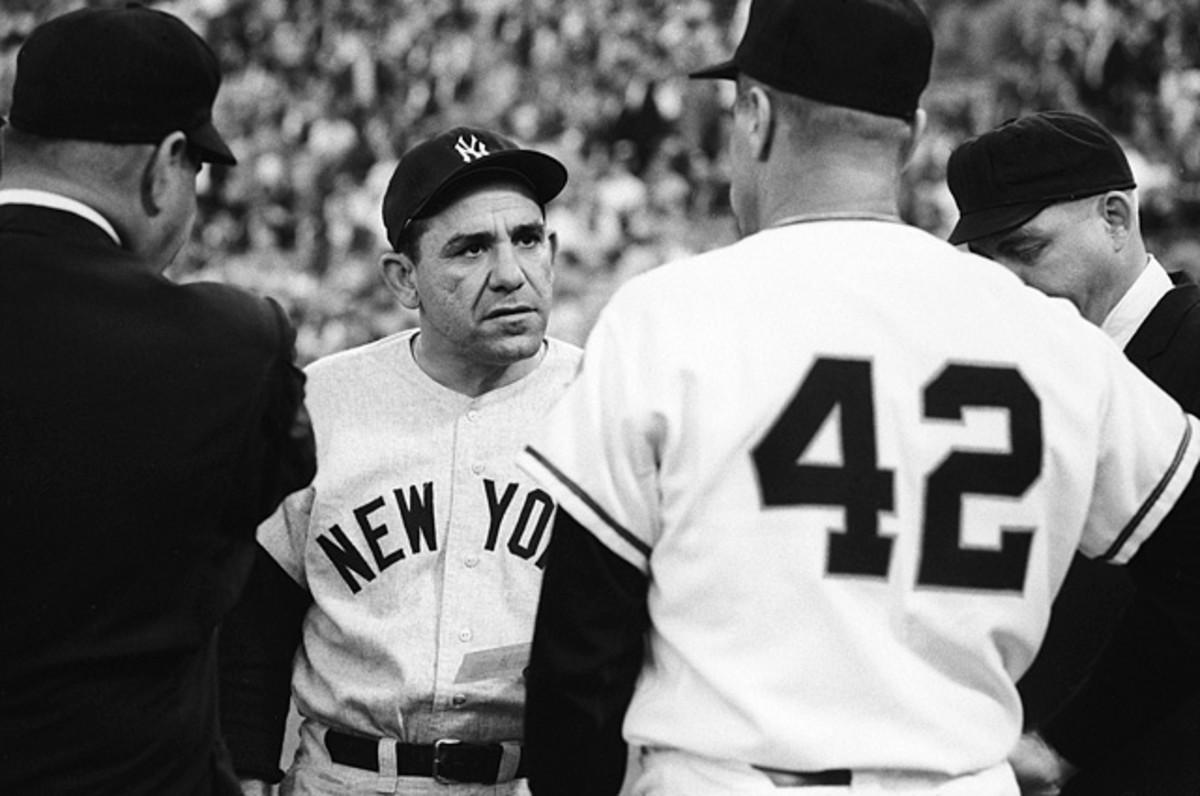
Yogi Berra

Yogi Berra and <br> Sparky Anderson
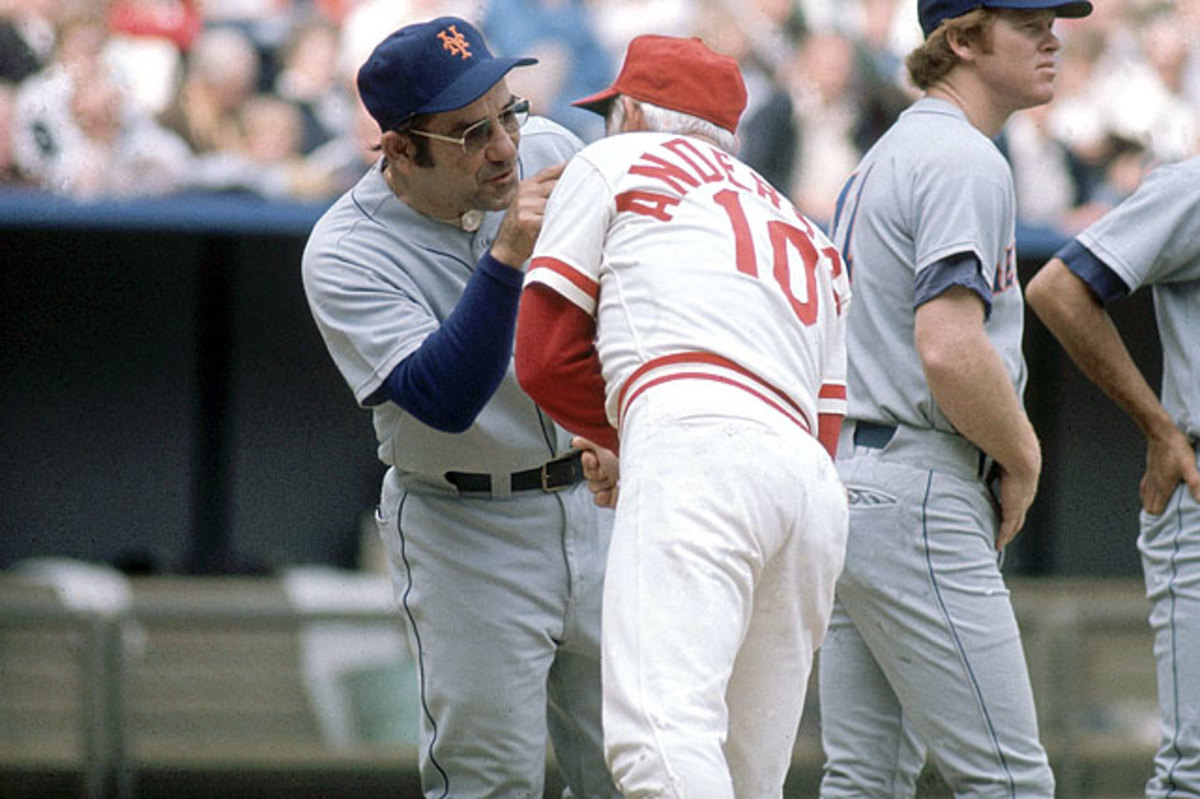
Yogi Berra and Tug McGraw
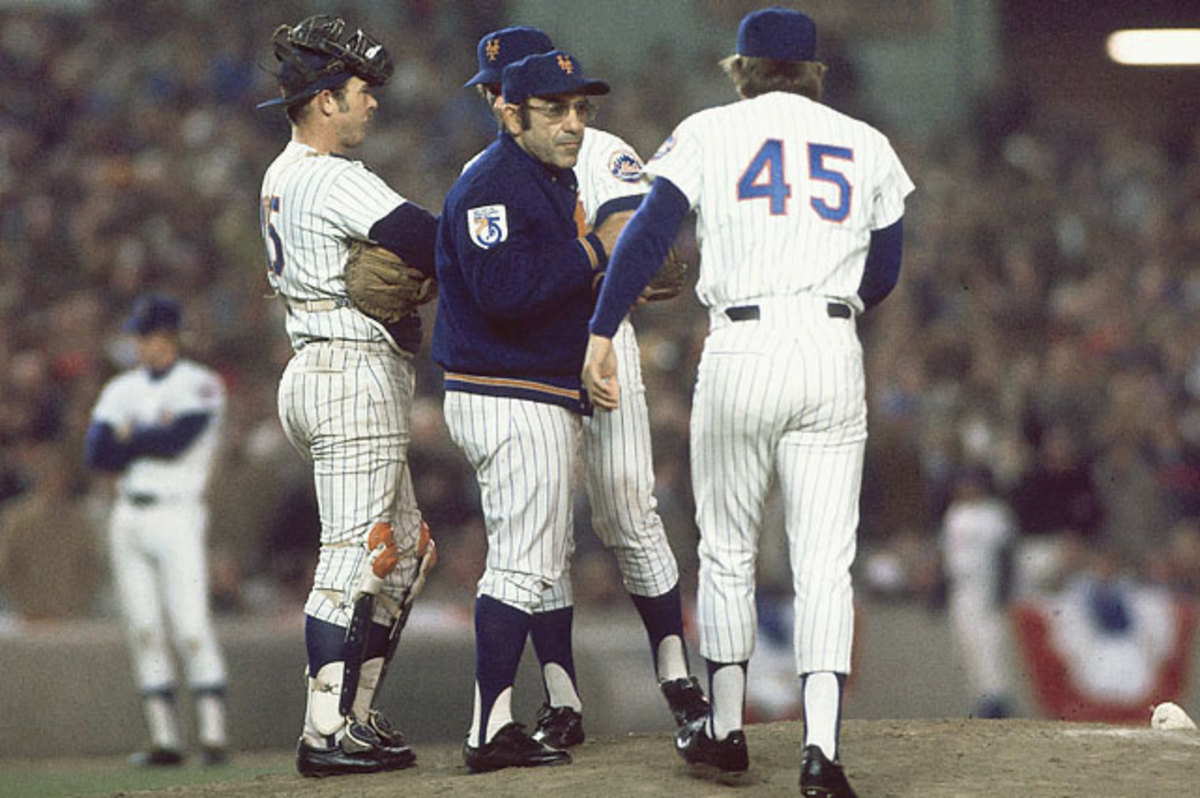
Yogi Berra

Yogi Berra and <br> George Steinbrenner
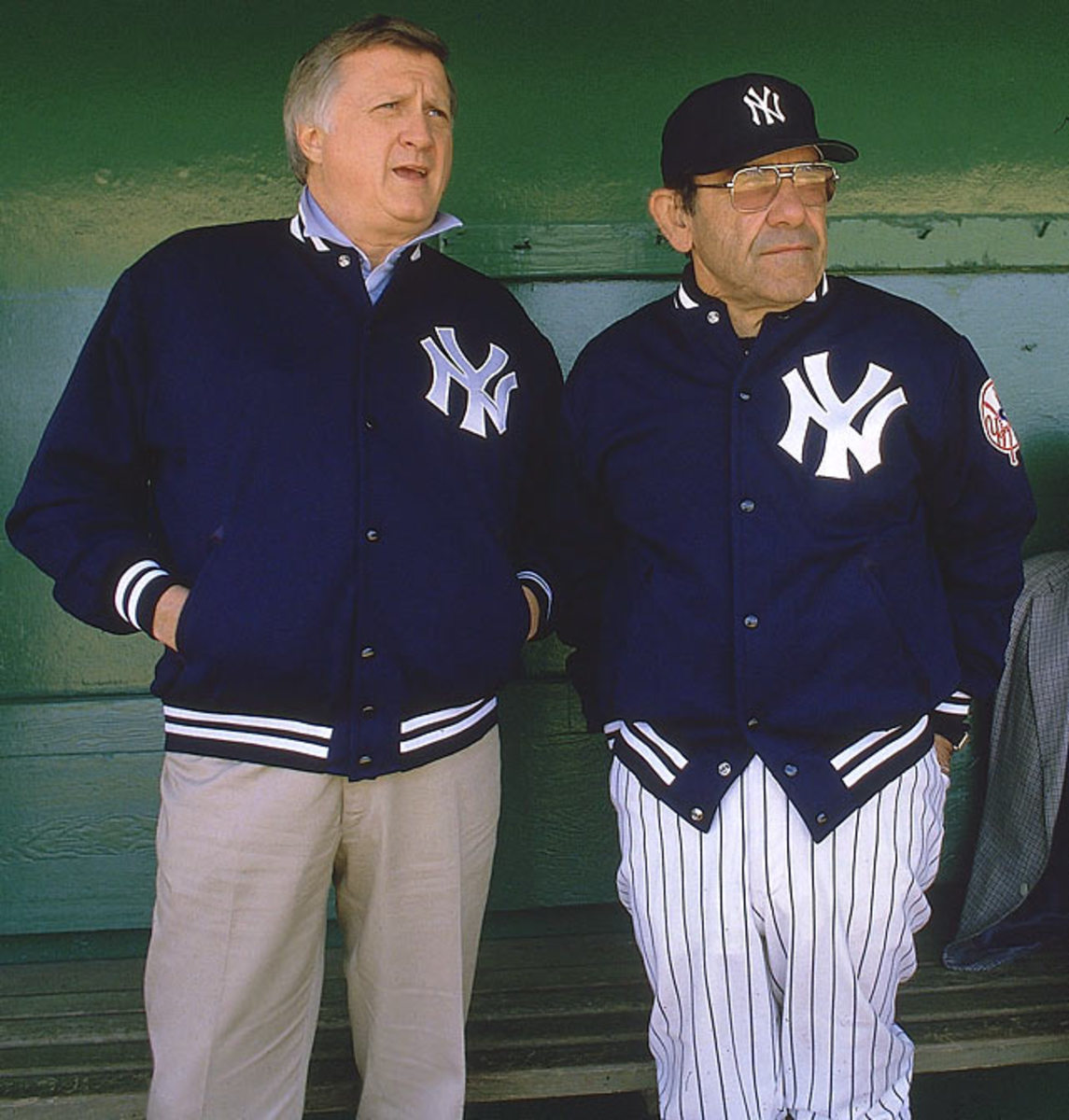
Yogi Berra

Yogi Berra

Yogi Berra

Yogi Berra and Whitey Ford
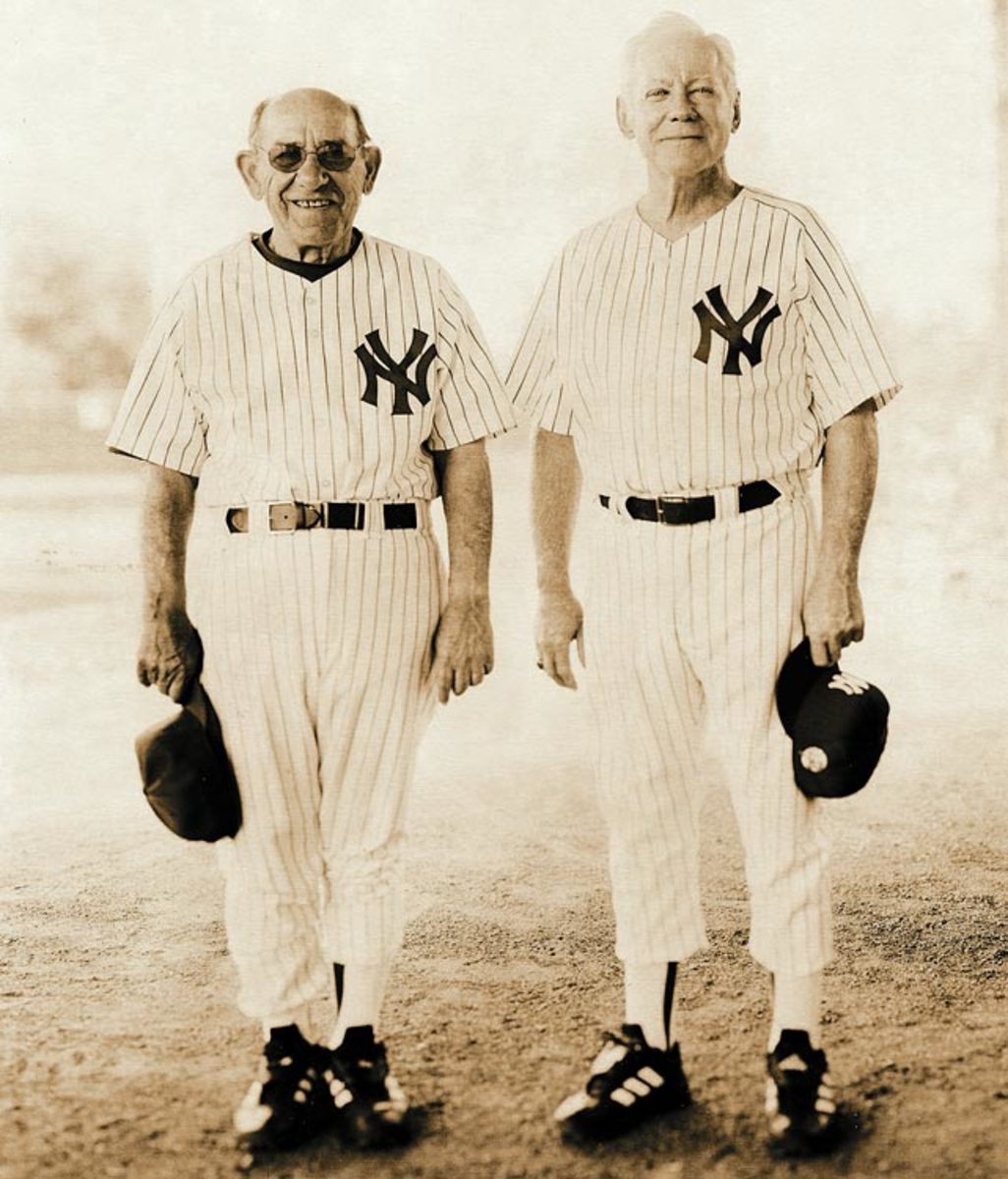
Yogi Berra

Yogi Berra, Joe Torre and <br> Randy Johnson
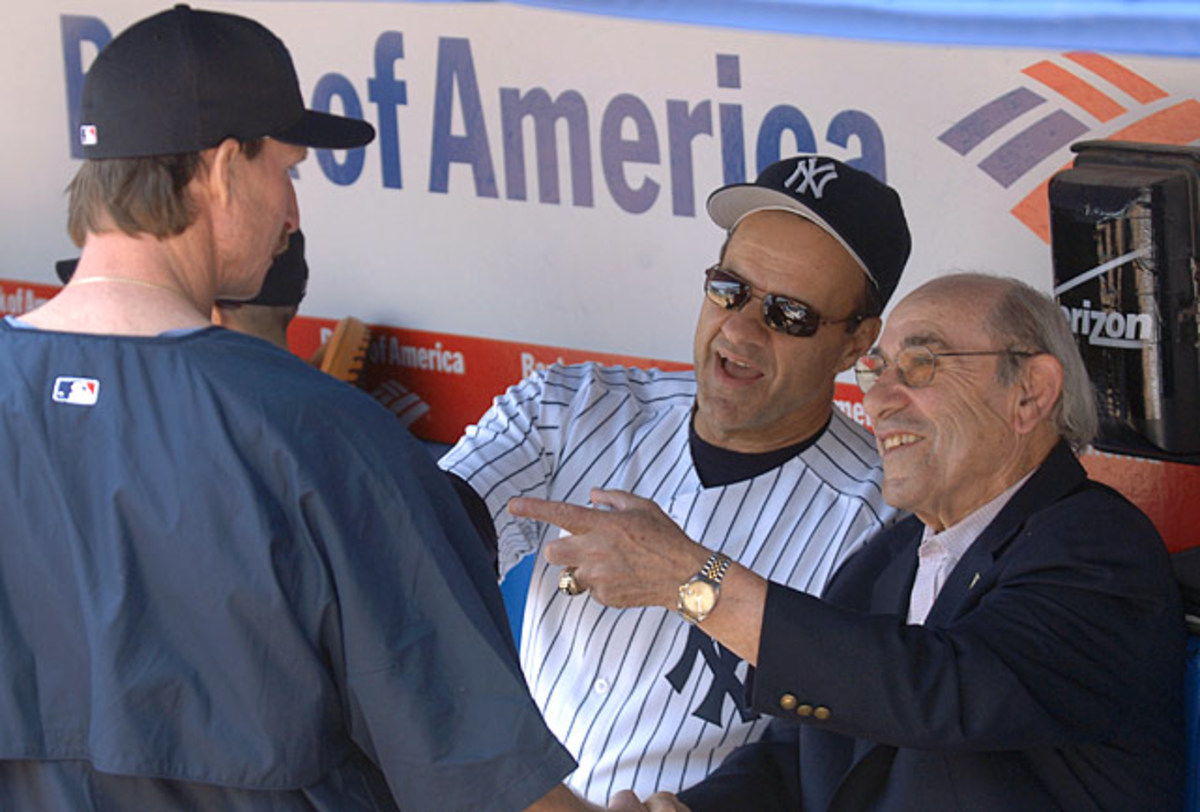
Yogi Berra and Whitey Ford

Yogi Berra and Gary Carter
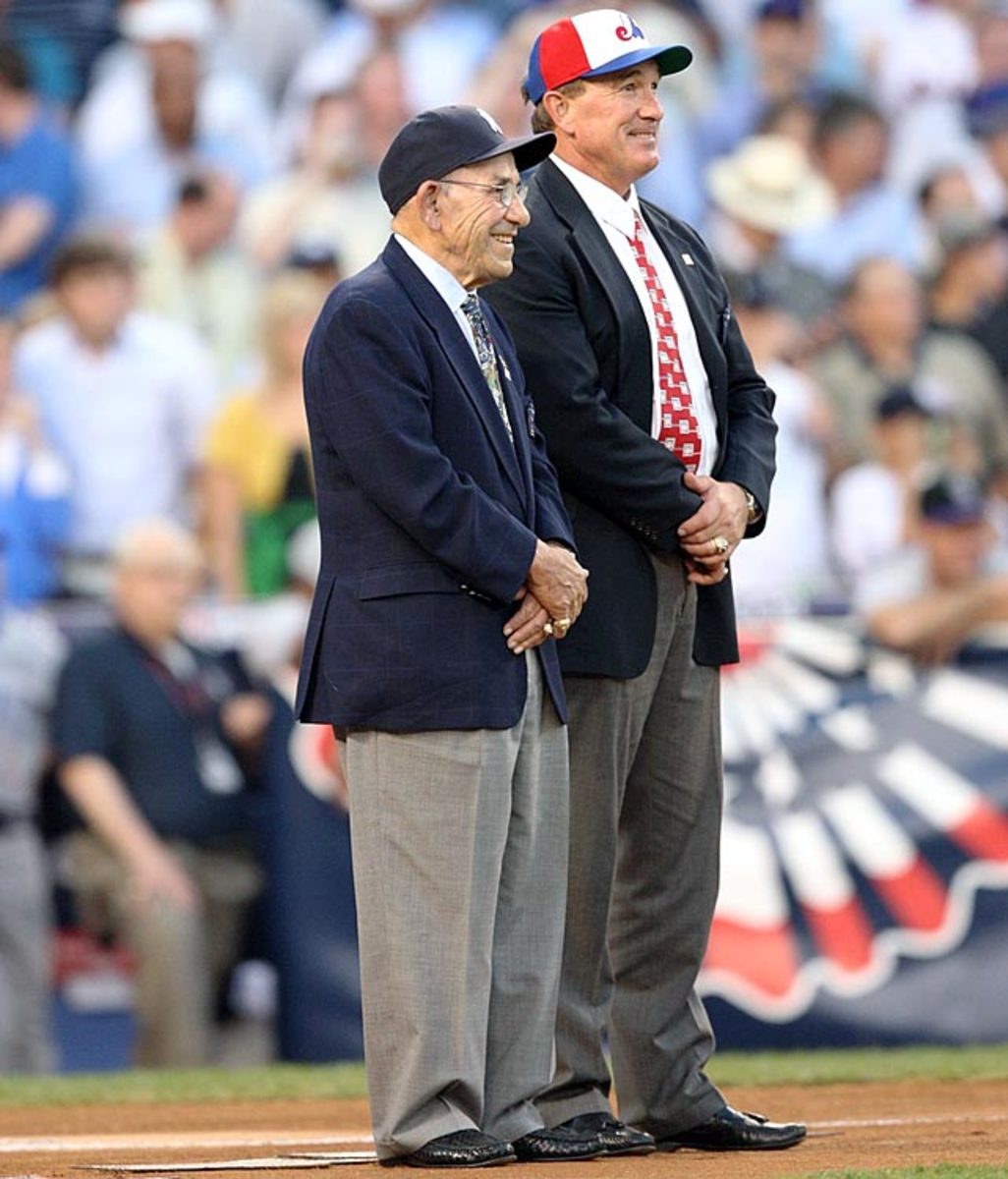
Yogi Berra

Yogi Berra and Derek Jeter
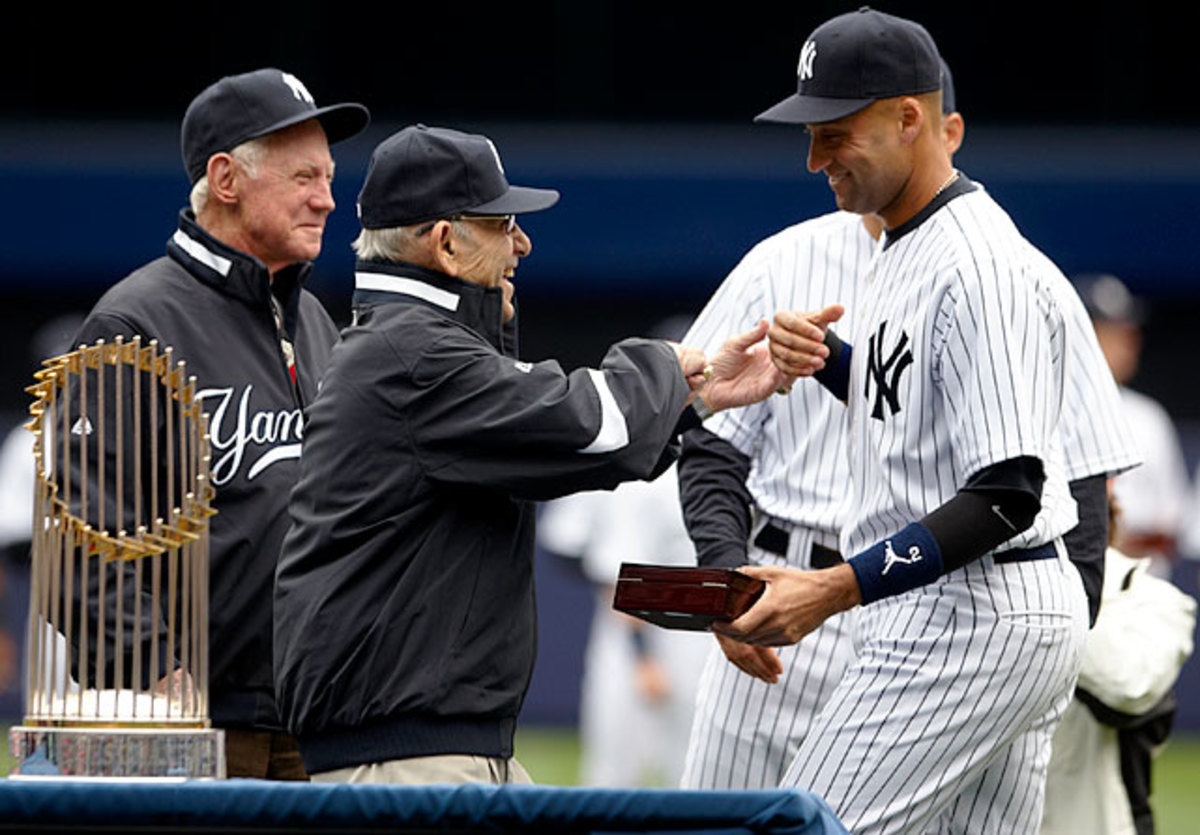
Yogi Berra

